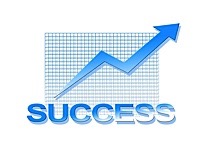 The Global Social Benefit Incubator (GSBI) Program 2011 developed by Santa Clara University’s Center for Science, Technology, and Society provides an opportunity to social benefit entrepreneurs in developing business plans for their organizations, including selecting them for a full scholarship valued at US $25,000. The business plans enable organizations to reach increasing number of beneficiaries.
The Global Social Benefit Incubator (GSBI) Program 2011 developed by Santa Clara University’s Center for Science, Technology, and Society provides an opportunity to social benefit entrepreneurs in developing business plans for their organizations, including selecting them for a full scholarship valued at US $25,000. The business plans enable organizations to reach increasing number of beneficiaries.
The GSBI consists of three major components:
- An on-line, mentored, application process hosted on Social Edge and based on three business planning exercises designed to benefit all who participate. In the applicants define their organizations value proposition, target market (beneficiaries), and “social business” model (key income and expense drivers).

 We need to move beyond using spending on research and development (R&D) as an indicator of innovation to a systems perspective, writes Eduardo Viotti.
We need to move beyond using spending on research and development (R&D) as an indicator of innovation to a systems perspective, writes Eduardo Viotti. Kansas, like the rest of the United States, has felt the effects of the economic recession. But thanks in part to the state’s diversified economy, we are emerging from the recession stronger than ever. While many states rely on one or two major industries for economic growth, Kansas is investing in several promising sectors of our economy, including the biosciences.
Kansas, like the rest of the United States, has felt the effects of the economic recession. But thanks in part to the state’s diversified economy, we are emerging from the recession stronger than ever. While many states rely on one or two major industries for economic growth, Kansas is investing in several promising sectors of our economy, including the biosciences. NASA 2010 Small Business Innovation Research (SBIR) Program Phase 1 awards have been selected and publicly announced on Wednesday, December 8, 2010 at 4:00 pm. The press release, list of awards, and award abstracts can be downloaded from this page. Please click on any of the items below.
NASA 2010 Small Business Innovation Research (SBIR) Program Phase 1 awards have been selected and publicly announced on Wednesday, December 8, 2010 at 4:00 pm. The press release, list of awards, and award abstracts can be downloaded from this page. Please click on any of the items below. Superficially at least, California’s problems are well known. Are they well understood? Apparently not.
Superficially at least, California’s problems are well known. Are they well understood? Apparently not. Setting up your own business may seem attractive from afar. The freedom from corporate drudgery, the pulse-quickening start, the sense of control over your destiny and perhaps, if you're lucky, a golden exit which sets you up for life. But the economic aspects are just one side of the challenge. Rarely discussed is the personal toll of life as an entrepreneur. The reason is obvious. You must have the brassy ring of confidence even when the product's not moving, the creditors are calling and your personal life is in tatters after months or years of relentless work.
Setting up your own business may seem attractive from afar. The freedom from corporate drudgery, the pulse-quickening start, the sense of control over your destiny and perhaps, if you're lucky, a golden exit which sets you up for life. But the economic aspects are just one side of the challenge. Rarely discussed is the personal toll of life as an entrepreneur. The reason is obvious. You must have the brassy ring of confidence even when the product's not moving, the creditors are calling and your personal life is in tatters after months or years of relentless work. When business leaders
When business leaders  The Minister for Enterprise, Trade and Innovation, Batt O’Keeffe TD, today launched a new €17m fund for innovative new Irish firms to create 'high-quality' jobs.
The Minister for Enterprise, Trade and Innovation, Batt O’Keeffe TD, today launched a new €17m fund for innovative new Irish firms to create 'high-quality' jobs. Recent consulting studies have re-confirmed that most performance improvement programs fail to achieve their stated goals and improve the business. These change initiatives are worse than “much ado about nothing”, as they divert attention and resources away from more critical needs and frustrate and exhaust the employees who worked on the initiatives.
Recent consulting studies have re-confirmed that most performance improvement programs fail to achieve their stated goals and improve the business. These change initiatives are worse than “much ado about nothing”, as they divert attention and resources away from more critical needs and frustrate and exhaust the employees who worked on the initiatives. Your company’s brand is its identity. And, generally, having a Web presence is critical.
Your company’s brand is its identity. And, generally, having a Web presence is critical. Twitter has just released their list of
Twitter has just released their list of 
 One of the most vexing hurdles for an idea management system deployment is deciding which people should contribute ideas on any given challenge. Then there’s the decision of picking a group of people to work on embellishing an idea once it has been submitted.
One of the most vexing hurdles for an idea management system deployment is deciding which people should contribute ideas on any given challenge. Then there’s the decision of picking a group of people to work on embellishing an idea once it has been submitted. In the spirit of the season, please forgive us this walk down memory lane as we highlight the top five articles on the Greentech Media news website this year. These were the news pieces most read by hundreds of thousands of our loyal readers around the globe.
In the spirit of the season, please forgive us this walk down memory lane as we highlight the top five articles on the Greentech Media news website this year. These were the news pieces most read by hundreds of thousands of our loyal readers around the globe. Today and tomorrow the Senate will vote on President Obama’s announced deal to extend for two years all of the tax cuts, both those from the Bush years and those for low-income workers from last year’s stimulus package. Under this proposal, recently expired benefits for the long-term unemployed would also be extended for another 13 months. In addition, the agreement would cut payroll taxes for one-year. What does all this mean for entrepreneurs?
Today and tomorrow the Senate will vote on President Obama’s announced deal to extend for two years all of the tax cuts, both those from the Bush years and those for low-income workers from last year’s stimulus package. Under this proposal, recently expired benefits for the long-term unemployed would also be extended for another 13 months. In addition, the agreement would cut payroll taxes for one-year. What does all this mean for entrepreneurs? How many new billion dollar firms would it take to permanently increase the U.S. GDP by one percentage point? A new
How many new billion dollar firms would it take to permanently increase the U.S. GDP by one percentage point? A new  Intelligent people live longer—the correlation is as strong as that between smoking and premature death. But the reason is not fully understood. Beyond simply making wiser choices in life, these people also may have biology working in their favor. Now research in honeybees offers evidence that learning ability is indeed linked with a general capacity to withstand one of the rigors of aging—namely, oxidative stress.
Intelligent people live longer—the correlation is as strong as that between smoking and premature death. But the reason is not fully understood. Beyond simply making wiser choices in life, these people also may have biology working in their favor. Now research in honeybees offers evidence that learning ability is indeed linked with a general capacity to withstand one of the rigors of aging—namely, oxidative stress.
 In the maze of regulatory actions that will reshape our financial sector, one in particular will have a potentially profound effect on America’s continued leadership in technology innovation and entrepreneurship.
In the maze of regulatory actions that will reshape our financial sector, one in particular will have a potentially profound effect on America’s continued leadership in technology innovation and entrepreneurship. Yesterday, Business Insider released the
Yesterday, Business Insider released the 
